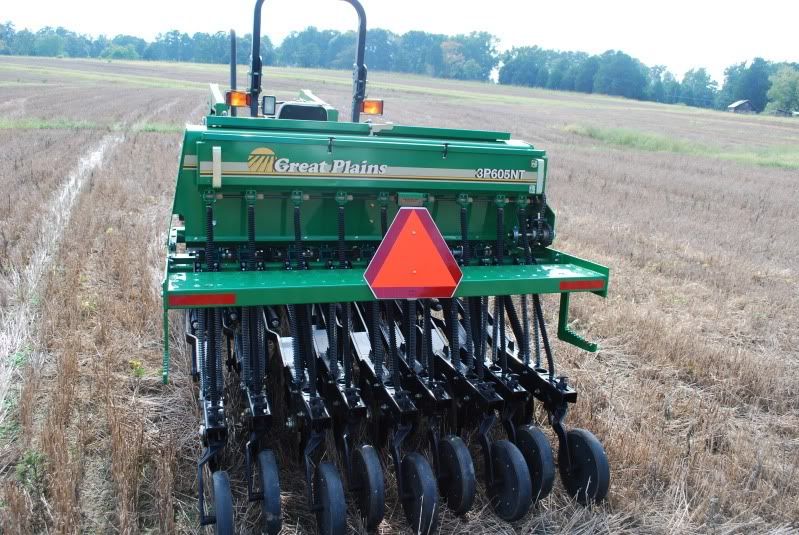I plant about 10 acres of food plots. Slowing I am accumulating the ideal equipment to facillitate this. Restored a nice Ford plow and a Deere fertilizer distributor. Next is a good rotary tiller so I can get rid of my worthless Leinbach disc. Maybe a cultipacker later. I don't know anything about drills, as we have always broadcast seed (wheat, oats, rye, clover) and hope someday to plant soybeans and corn. What advantages do grain drills offer? Are they worth it? Same soil preparation as we have always done (plow, disc, level)? I would need a narrow one (about 6 or 7" working width). Which ones should I look for and how do you assess one for wear? Do they break down often? How much could I expect to pay? Anything you tell me about grain drills is more than I know! Thanks for teaching me!
If you're handy, you can get a vintage grain drill cheap and fix it up. Three years ago I found a pair of 1940s Minneapolis Moline P3-6 drills (10 ft wide, 20 drops, single disc openers). Cost: $275 plus about $150 in new parts, mostly nuts and bolts.
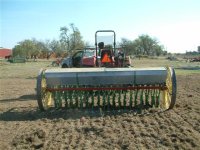
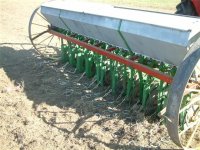
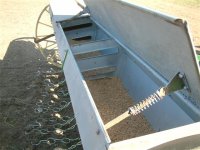
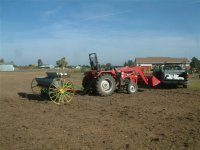
I assume you want to find a used one--new drills cost mucho bucks. Don't buy one until you check it out thoroughly. Make sure all the parts are there. I was lucky and had two nearly identical drills so I had enough parts to make one good drill plus spares. Check the seed cups in the bottom of the seed hoppers. If they're very rusty and/or not rotating, you'll have to disassemble the feeds and clean them up. Not hard, just time consuming.
My drills have two smaller hoppers for small seeds like alfalfa, grass, etc. I plant Kanota oats on 6 acres and use the feeds in the large hopper for that job. I also spread granulated fertilizer with the drill using the large hopper.
Some drills have double disc openers which probably work a little bit better than the single disc openers as on my drill.
You need some sort of drag chain setup attached to the drops to cover the seed. You can see the ones I use in the photo.
I added a hydraulic cylinder to the drill to raise and lower the disc openers while making turns. Some older drill come with trip clutches for this task--you pull the rope on the clutch to raise and lower the openers.
Grain drills generally waste less seed than broadcast spreaders. And you can cover the seed better with a grain drill. The seed doesn't have to be deep (an inch or two), but the seed has to be in good contact with the soil.
My drill did pretty good. Here's what my oat crop looked like last April
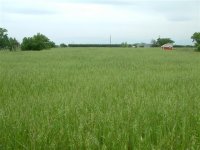
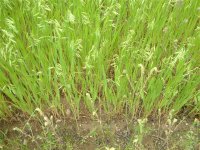
Good luck.

